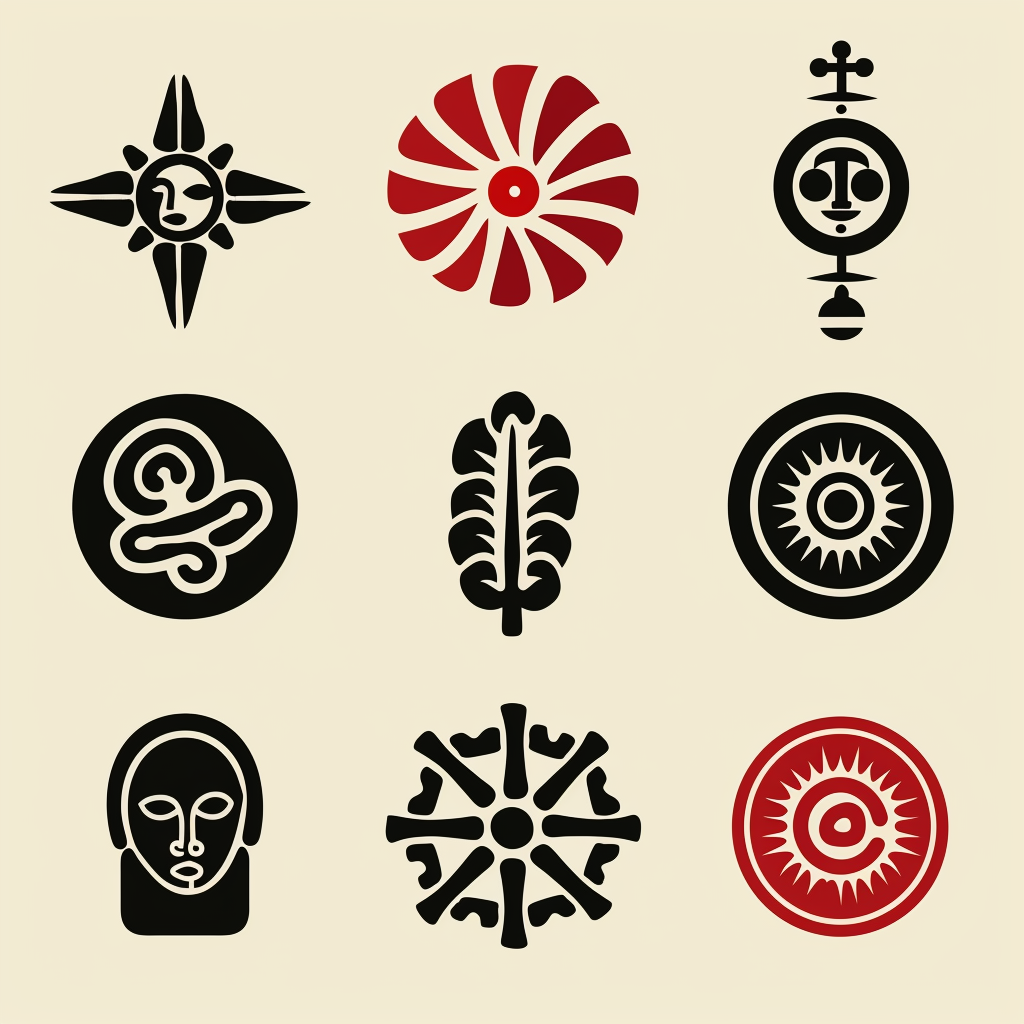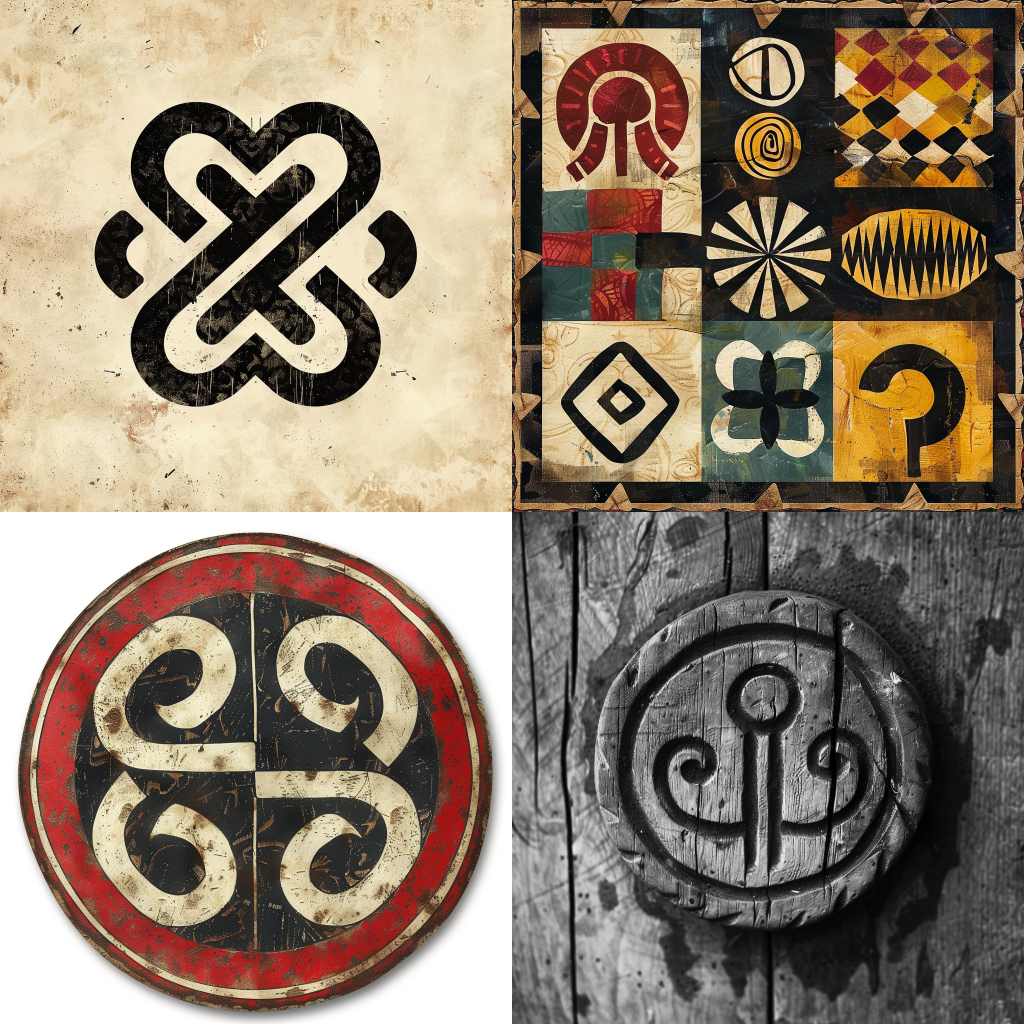In the heart of West Africa, nestled within the rich tapestry of Ghanaian culture, lies a treasure trove of symbols that carry with them centuries of wisdom, tradition, and meaning. These symbols, known as Adinkra, serve as a visual language, communicating profound concepts and values that have shaped African societies for generations. Join us on a journey as we unveil the beauty and significance of Adinkra Symbols, that continue to shape African culture to this day.

Image By Bosomba Amosahother WIKIMEDIA COMMONS
The Origins of Adinkra
The story of Adinkra begins with the Ashanti people of Ghana, who have preserved and passed down this sacred tradition for centuries. Legend has it that Adinkra symbols were originally created by Asante king Nana Kwaku Duah in the early 19th century, inspired by the rich symbolism found in nature, proverbs, and oral traditions.
Each Adinkra symbol carries its own unique meaning, ranging from concepts of wisdom and courage to unity and spirituality. These symbols were traditionally used to adorn textiles, such as the famous Adinkra cloth, which was worn by royalty and used for ceremonial purposes.

Decoding Adinkra Symbols
At the heart of Adinkra lies a deep reverence for the interconnectedness of all things. Many of the symbols are based on elements of nature, such as plants, animals, and celestial bodies, symbolizing the harmony and balance that exists in the universe.
One of the most well-known Adinkra symbols is the “Gye Nyame,” which translates to “except for God” in the Akan language. This symbol represents the omnipotence and omnipresence of the Supreme Being and serves as a reminder of the importance of faith and humility in the face of life’s challenges.
Other symbols, such as the “Sankofa” bird, symbolize the importance of learning from the past in order to move forward. Depicted with its head turned backward and its feet facing forward, the Sankofa bird encourages us to reflect on our roots and heritage as we journey through life.
The Cultural Significance of Adinkra
Adinkra symbols are more than just decorative motifs—they are repositories of cultural knowledge and wisdom, passed down through generations as a means of preserving and transmitting traditional values and beliefs. From birth to death, Adinkra symbols are woven into the fabric of Ghanaian society, serving as guides for navigating life’s joys and sorrows.
For example, the “Akoben” symbol, which depicts a war horn, symbolizes vigilance and readiness for action. It serves as a call to arms, reminding individuals to remain vigilant and steadfast in the face of adversity.
Similarly, the “Duafe” symbol, which represents a wooden comb, symbolizes beauty and femininity. It serves as a reminder of the importance of self-care and self-love, encouraging individuals to take pride in their appearance and embrace their unique beauty.
Preserving Adinkra for Future Generations

In recent years, there has been a renewed interest in Adinkra symbols and their cultural significance, both within Ghana and around the world. Organizations and artisans are working tirelessly to preserve and promote this ancient tradition, ensuring that future generations will continue to benefit from its wisdom and beauty.
One such organization is the Adinkra Cultural Arts Studio in Accra, Ghana, which offers workshops and educational programs on Adinkra symbolism and textile design. Through these initiatives, young people are learning about their cultural heritage and gaining practical skills in traditional arts and crafts.
As we come to the end of our exploration, let us pause to reflect on the beauty and significance of Adinkra symbols in African culture. From their humble origins in the Ashanti kingdom to their enduring legacy in modern Ghanaian society, Adinkra symbols continue to inspire and uplift us with their timeless wisdom and grace.
As we continue our journey through life, may we carry with us the lessons of Adinkra—lessons of unity, resilience, and spiritual enlightenment. And may we always remember the words of the Ashanti proverb: “Se wo were fi na wosankofa a yenkyi,” which translates to “It is not wrong to go back for that which you have forgotten.” For in remembering our past, we chart a course for our future, guided by the symbols that shape African culture and identity.
This blog post aims to provide an inspiring and educational exploration of Adinkra symbols, celebrating their cultural significance and enduring legacy in African society.


